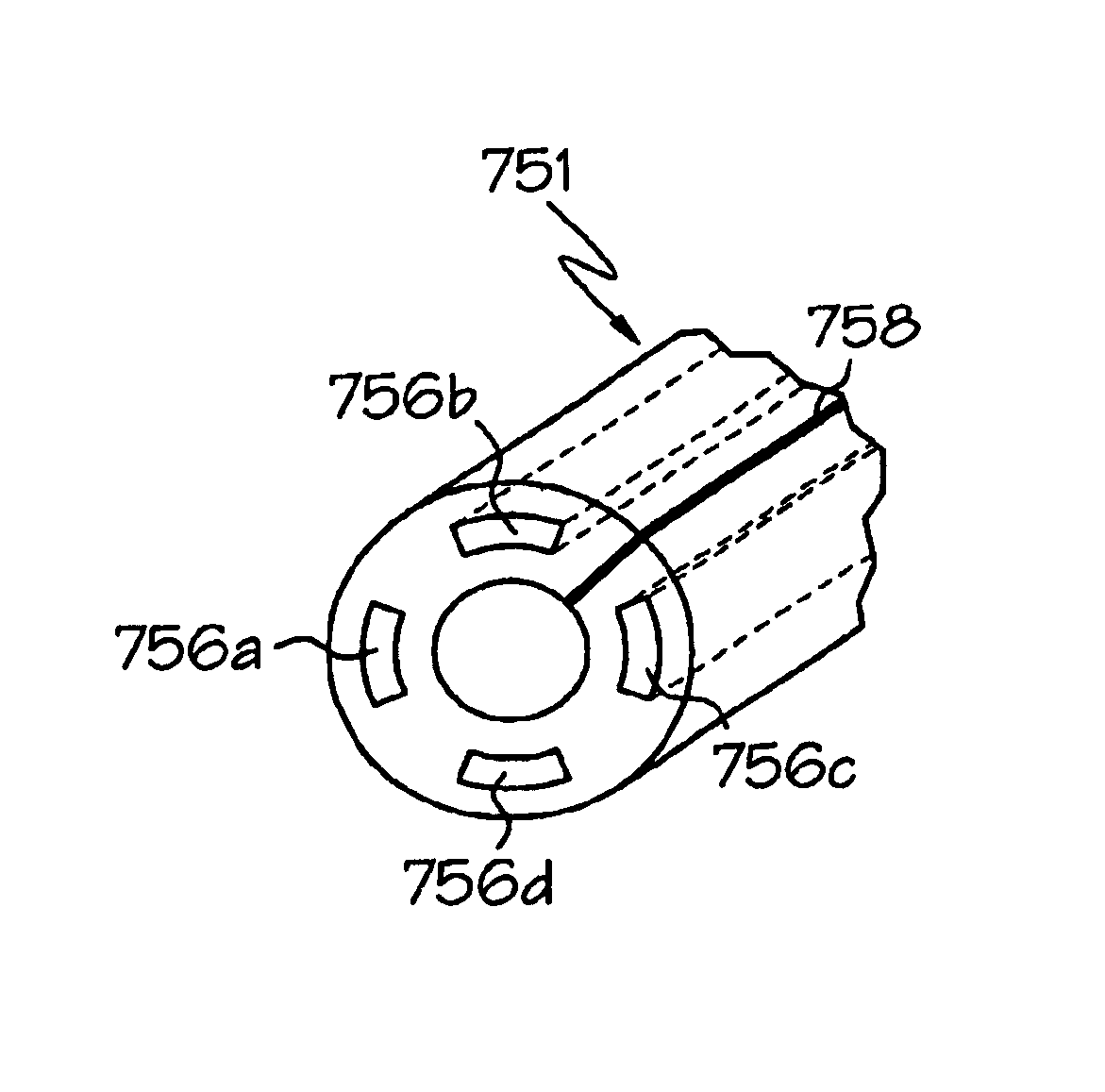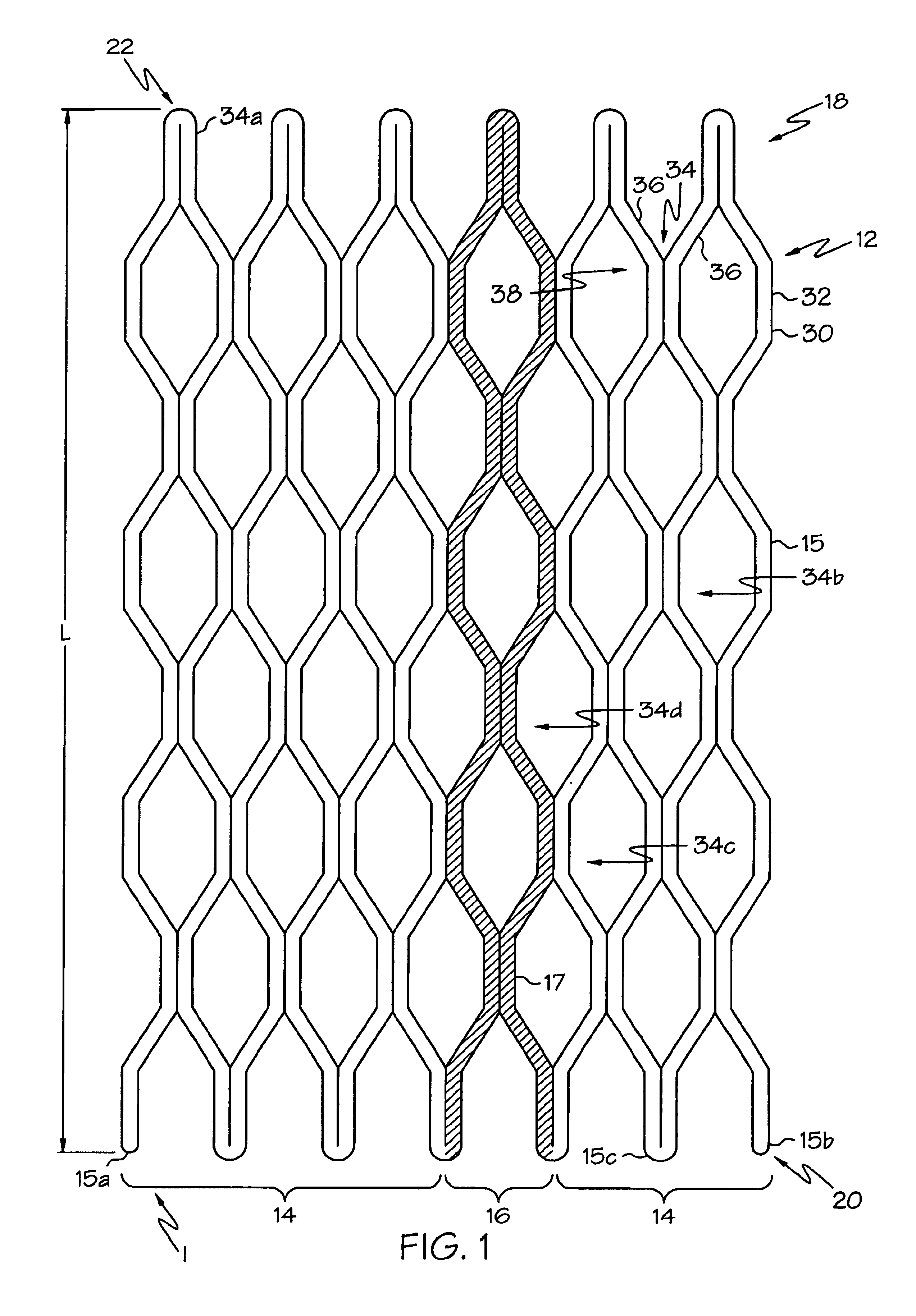Combination self-expandable, balloon-expandable endoluminal device
a self-expanding, endoluminal technology, applied in the field of endoluminal devices, can solve the problems of limited x-ray visibility, self-expanding devices, and the general inability to be manipulated to a larger diameter after deploymen
- Summary
- Abstract
- Description
- Claims
- Application Information
AI Technical Summary
Benefits of technology
Problems solved by technology
Method used
Image
Examples
Embodiment Construction
[0044]The invention will next be illustrated with reference to the figures wherein similar numbers indicate the same elements in all figures. Such figures are intended to be illustrative rather than limiting and are included herewith to facilitate the explanation of the apparatus of the present invention.
[0045]Although the term “vena cava filter” technically refers to implantable filters placed in the vena cava—the jugular or femoral veins, which are the typical locations for such filters—the term as used herein refers to any type of implantable filter, regardless of the specific body lumen into which it is implanted. In particular, the anchoring assemblies or portions of vena cava filters shown in U.S. Pat Nos. 5,709,704 and 5,836,939 may be particularly well-suited for construction in accordance with this invention. Vena cava filters are deployed much in the same way as stents, and thus throughout this application the term “endoluminal device” is used to refer to both vena cava fi...
PUM
| Property | Measurement | Unit |
|---|---|---|
| thickness | aaaaa | aaaaa |
| superelastic | aaaaa | aaaaa |
| diameter | aaaaa | aaaaa |
Abstract
Description
Claims
Application Information
 Login to View More
Login to View More - R&D
- Intellectual Property
- Life Sciences
- Materials
- Tech Scout
- Unparalleled Data Quality
- Higher Quality Content
- 60% Fewer Hallucinations
Browse by: Latest US Patents, China's latest patents, Technical Efficacy Thesaurus, Application Domain, Technology Topic, Popular Technical Reports.
© 2025 PatSnap. All rights reserved.Legal|Privacy policy|Modern Slavery Act Transparency Statement|Sitemap|About US| Contact US: help@patsnap.com



